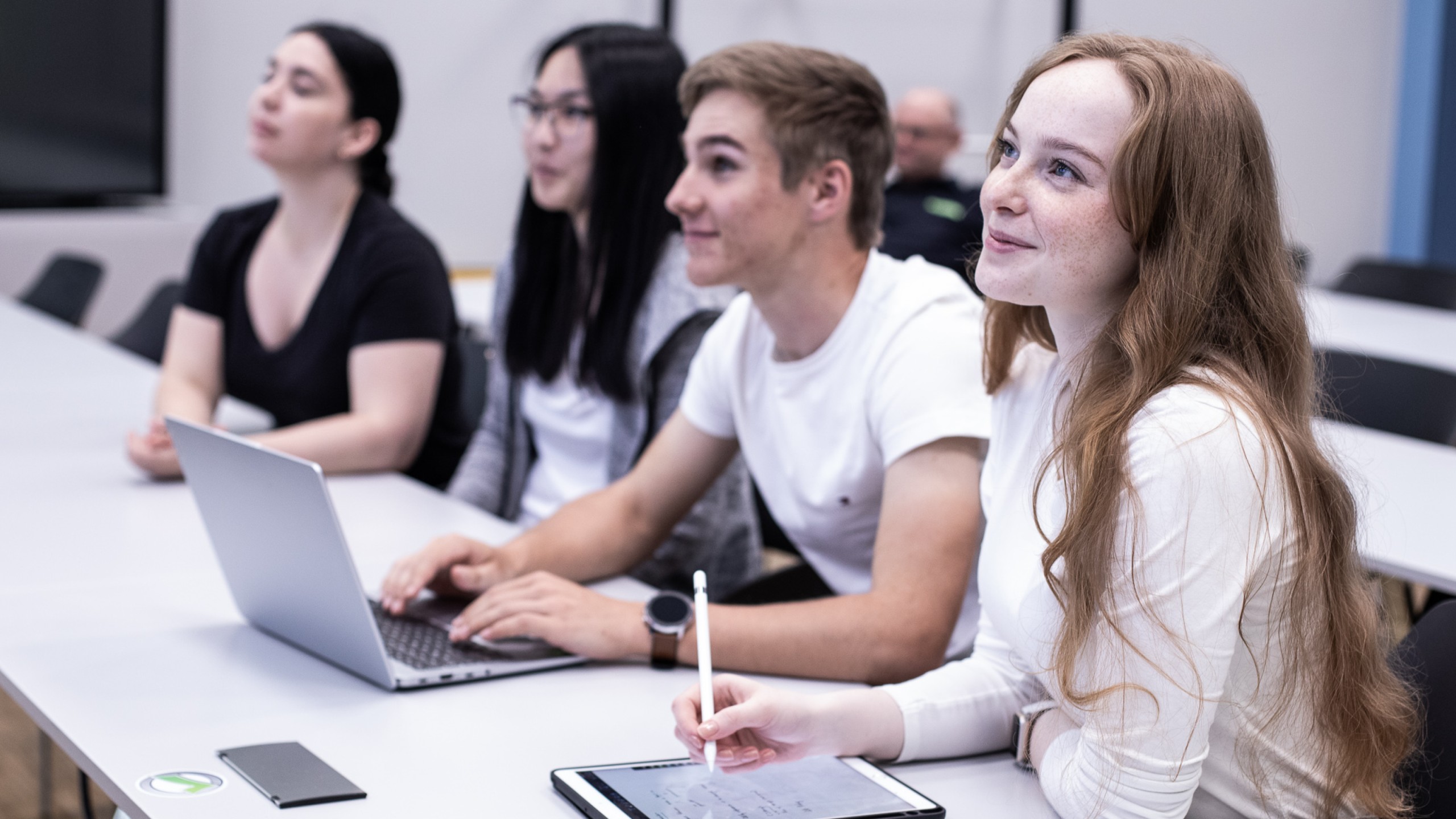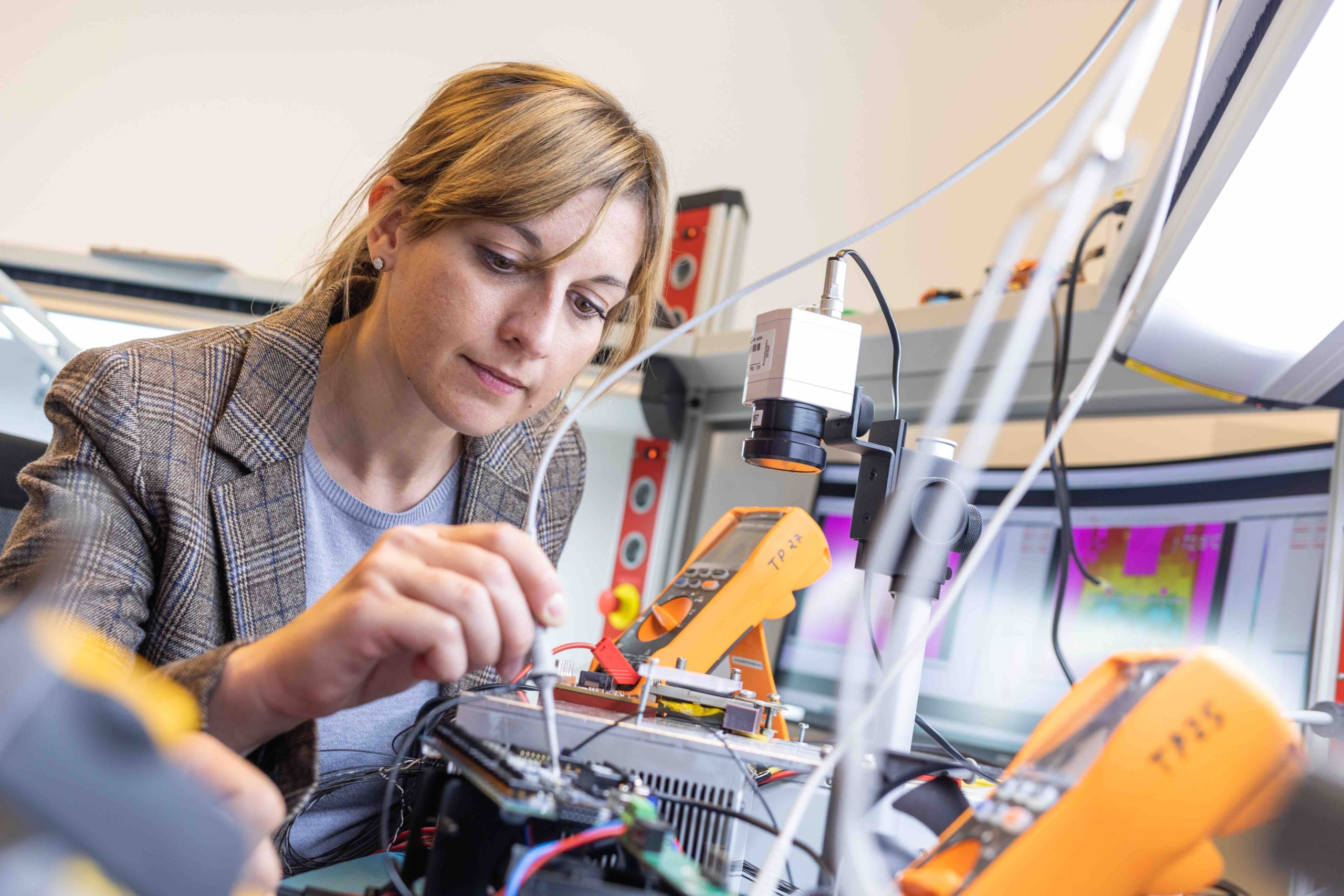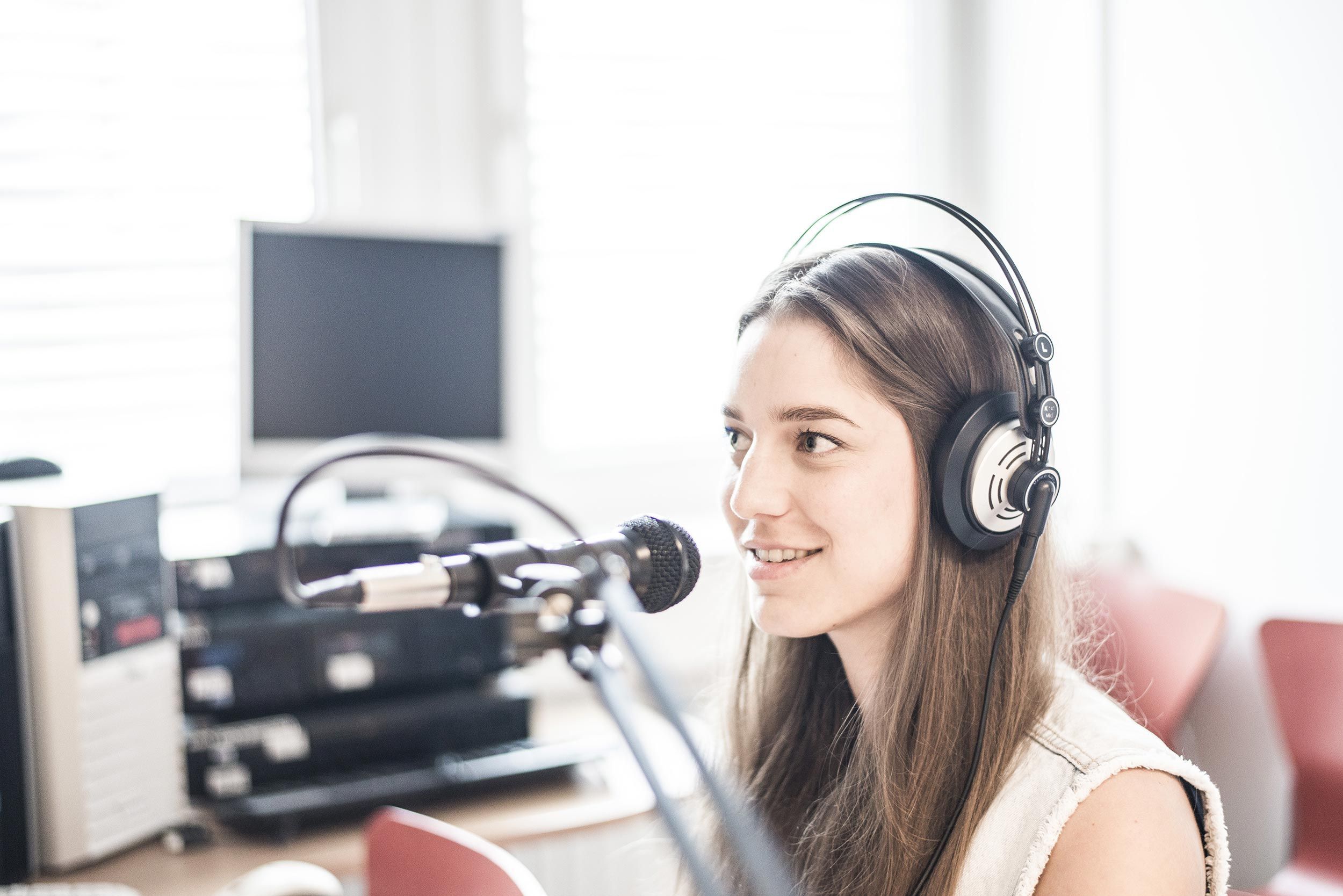
Ready, study, go!
Start your studies top informed.

Study your dream!
All information about studying.

Stay in touch!
Stay connected with the university.

Study with Purpose!
Discover our study programmes.

Advance with Purpose!
Lifelong learning and thinking ahead.

Research with Purpose!
Research from idea to application.

Better together!
As a university we create new opportunities.

Audio Production. Immersive Audio.
In the Sound Design study track, you will deepen your knowledge of audio production for video, games and mobile apps. You will learn how to use high-quality audio techniques professionally in post-production, such as mastering, synchronisation, real-time synthesis, sound restoration and audio programming. You will also create audio tracks for immersive spaces.
Product Sound Design. Audio Branding.
You will develop strategies for the acoustic optimisation of products – from the design of existing or new sounds to the creation of complete soundscapes. In addition, you will deal with acoustic brands, such as sound logos or corporate sound design.
Sonification. Sonic Interaction Design.
To convert data into sound, you will learn methods such as audification, parameter mapping and model-based sonification. At the intersection of interaction design and sound & music computing, the focus is on interactive sound generation.
Sound design projects.
In interdisciplinary projects, you will implement audio stories, sound installations with moving images or light, and multi-channel productions. In the process, you will acquire technical skills and a deep understanding of the emotional and aesthetic impact of sound in various media.
Interuniversity and interdisciplinary education
Students benefit from the collaboration between FH JOANNEUM and the University of Music and Performing Arts Graz, which enables them to work in interdisciplinary and international teams. The course also promotes the combination of sound design with interaction and visual design in the media sector. The students acquire design skills in these areas as well, and receive a degree certificate from both universities.
What specialisations are available?
Interdisciplinary. Individual. International.
The Sound Design study track offers you the opportunity to deepen your creative expertise and collaborate on interdisciplinary projects with students from Communication and Exhibition Design as well as Interaction, Media and Sound Design. This results in creative and research-oriented projects that combine visual communication, spatial design and digital media in innovative ways.
In the 4th semester, you will complete your Master’s thesis, including your own design piece – flexibly, independently of location and with a practical focus. This allows you to develop an individual portfolio project that showcases your personal creative signature and strengthens your career opportunities.
Graduates work in a wide range of professional fields – for example, as sound designers for film, games, podcasts, interactive media or exhibitions, in acoustic brand communication, applied research, teaching and science, or as consultants for UX, product and spatial sound. They are qualified for jobs at the interface between media, technology, communication and industry.
Study mode, self-study and attendance
Study mode
The Master’s course in Sound Design is organised to fit in with part-time work commitments with lessons taking place between Tuesday and Friday. The average required attendance during the first three semesters is 19 hours per week. It is therefore possible to combine your studies with a part-time job. The fourth semester is dedicated to writing the Master’s thesis.
During the semester, classes take place from 9:00 to 18:30 from Tuesday to Friday. E-learning sessions are not available.
Self-study
The workload is based on the following ECTS credits: each semester, students are credited with 30 ECTS points for a workload of approx. 750 hours. Around 20 units of attendance are deducted from this during the first three semesters and the supervision of the Master’s thesis in the fourth semester. This results in a workload of approx. 520 hours during the first three semesters, or 34 hours per week. The Master’s thesis should correspond to a workload of 750 to 800 hours.
Attendance
There is compulsory attendance in all courses of FH JOANNEUM. You may be excused if you present a doctor’s certificate to show that you were ill. Students require a minimum 80% attendance level. If you miss more than 20%, you will fail the course and won’t be able to sit the first examination. The head of degree programme has the final decision about the consequences of absence as well as exceptions to compulsory attendance. We try to accommodate any extra-curricular design-related activities our students may wish to pursue.
